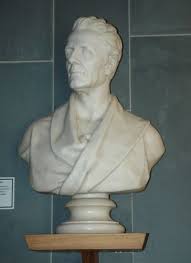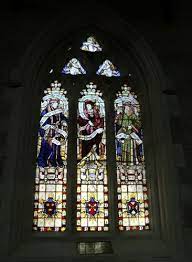1802: Robert Pitcairn born in Edinburgh. Educated in Edinburgh.
1824: Arrived in Hobart Town. A free settler given a grant of land near Bothwell. He initially farmed and then returned to the legal profession.
1830: Married Dorothea daughter of a military man. They had four children. A daughter and three sons. Two sons died in infancy.
1836: Built his house in New Town. Named it Cairn Lodge.
Robert Pitcairn was an important member of the legal profession. He was a member of a government committee set up during the depression of the 1840s to consider the law relating to insolvency.
1844: Report from insolvency committee recommended the abolition of imprisonment for debt and the protection of creditors of small sums.
1845: Pitcairn became active for the cessation of transportation and the introduction of responsible government. To Pitcairn the moral and social evils of the probation system and the exodus of thousands of free people to the mainland was to be solved by the end of transportation, the introduction of representative government and the large-scale immigration of free families.
1850: Cairn Lodge. owned by Francis Russell Nixon. Anglican Bishop. He renamed it Bishopstowe.
1852: Transportation ended.
1856: Self-government begins.
1861: Robert Pitcairn dies.
1866: A marble bust of Robert Pitcairn unveiled in the supreme court. A window in his memory was placed in St David's Cathedral.
1864: Owned by Captains Charles and James Bayley. He renamed it Runnymede after his favourite ship.
The Bayley family lived in the house for the next 100 years.
1866: Report from the local newspaper.
Yesterday afternoon at three o'clock, the ceremony of unveiling the bust of the late Mr. Robert Pitcairn, solicitor of the Supreme Court, took place in the Court House, Macquarie Street in the presence of a number of visitors. The bust, of white marble, was placed on a pedestal in the south-west corner of the Court, and a small dais was provided for His Honor Sir Valentine Fleming, Knt., Chief Justice, who had complied with the invitation of the committee to unveil the bust.
1963: Runnymede is owned by the National Trust.
1824: Arrived in Hobart Town. A free settler given a grant of land near Bothwell. He initially farmed and then returned to the legal profession.
1830: Married Dorothea daughter of a military man. They had four children. A daughter and three sons. Two sons died in infancy.
1836: Built his house in New Town. Named it Cairn Lodge.
Robert Pitcairn was an important member of the legal profession. He was a member of a government committee set up during the depression of the 1840s to consider the law relating to insolvency.
1844: Report from insolvency committee recommended the abolition of imprisonment for debt and the protection of creditors of small sums.
1845: Pitcairn became active for the cessation of transportation and the introduction of responsible government. To Pitcairn the moral and social evils of the probation system and the exodus of thousands of free people to the mainland was to be solved by the end of transportation, the introduction of representative government and the large-scale immigration of free families.
1850: Cairn Lodge. owned by Francis Russell Nixon. Anglican Bishop. He renamed it Bishopstowe.
1852: Transportation ended.
1856: Self-government begins.
1861: Robert Pitcairn dies.
1866: A marble bust of Robert Pitcairn unveiled in the supreme court. A window in his memory was placed in St David's Cathedral.
1864: Owned by Captains Charles and James Bayley. He renamed it Runnymede after his favourite ship.
The Bayley family lived in the house for the next 100 years.
1866: Report from the local newspaper.
Yesterday afternoon at three o'clock, the ceremony of unveiling the bust of the late Mr. Robert Pitcairn, solicitor of the Supreme Court, took place in the Court House, Macquarie Street in the presence of a number of visitors. The bust, of white marble, was placed on a pedestal in the south-west corner of the Court, and a small dais was provided for His Honor Sir Valentine Fleming, Knt., Chief Justice, who had complied with the invitation of the committee to unveil the bust.
1963: Runnymede is owned by the National Trust.


